
Guest Testimonials
Authentic Experiences with Sayat Travel
The Sayat Travel team based in Mongolia is 100% local and has spent years building personal relationships with the local nomadic families that we will visit.
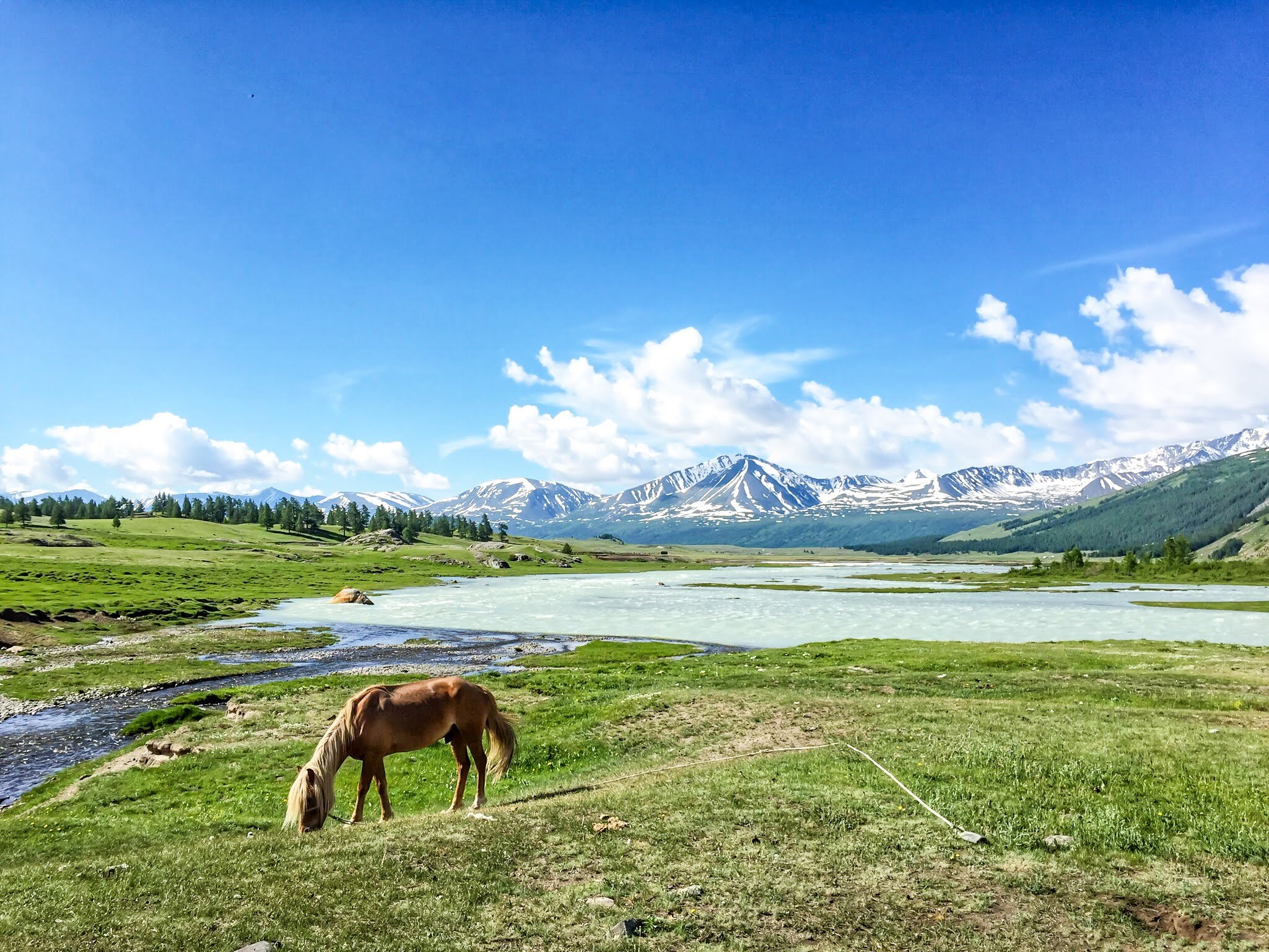
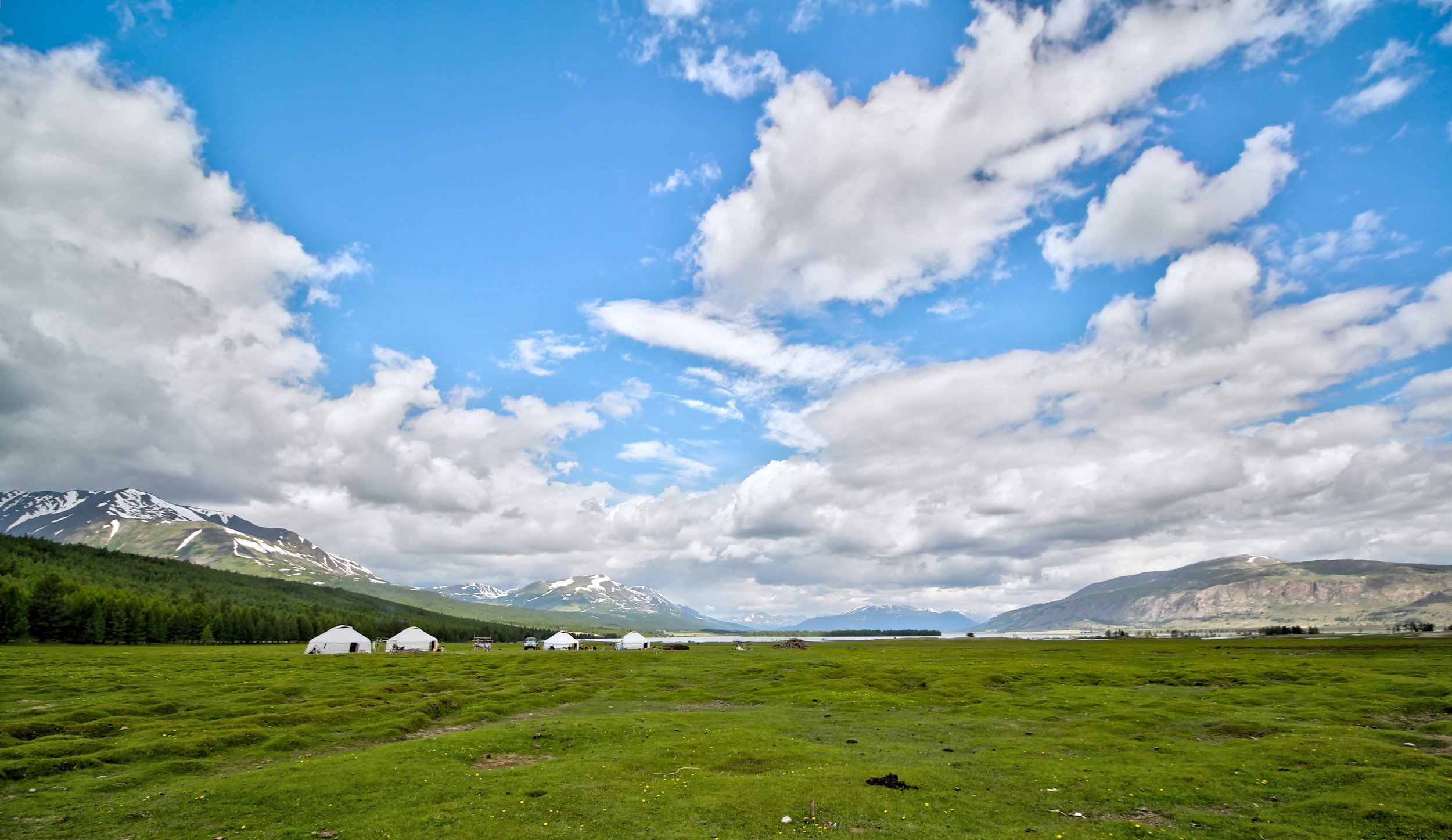

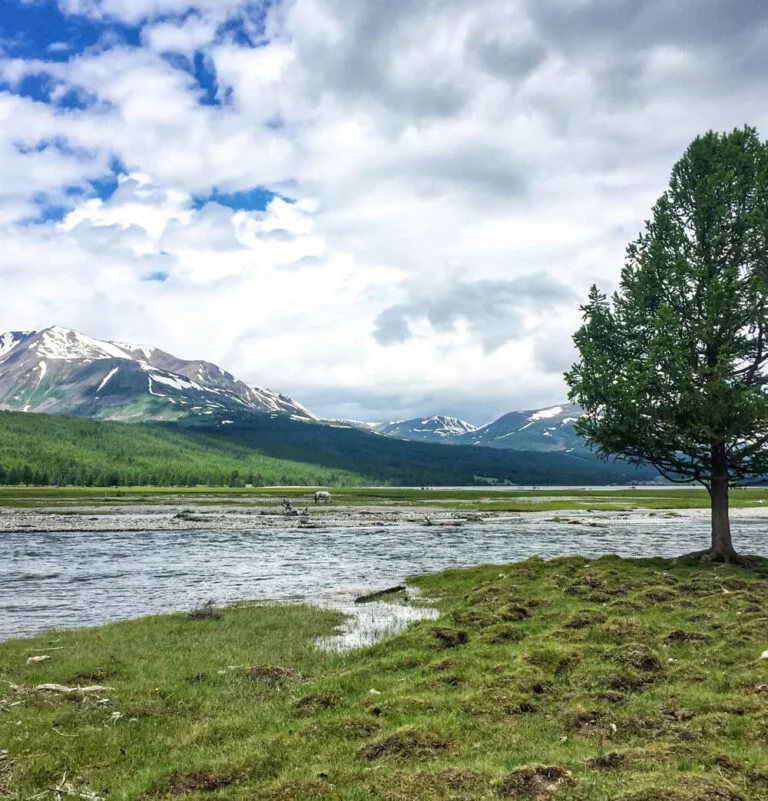
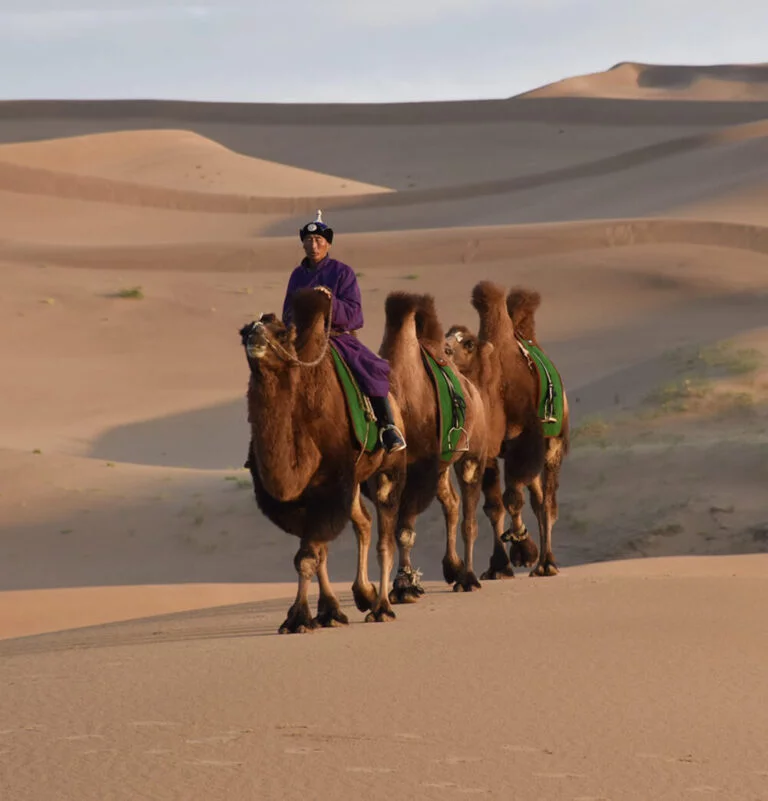
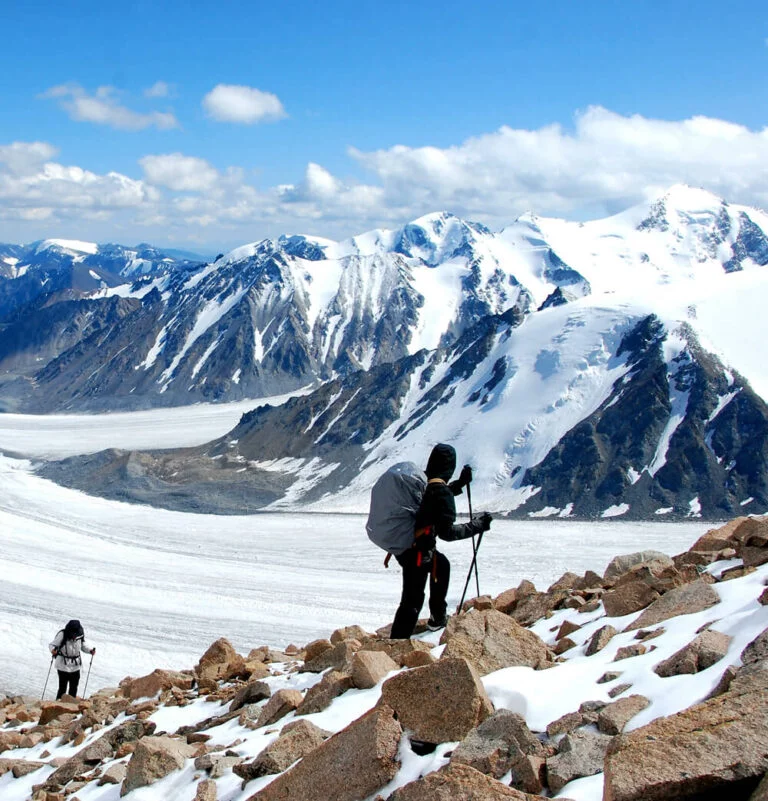



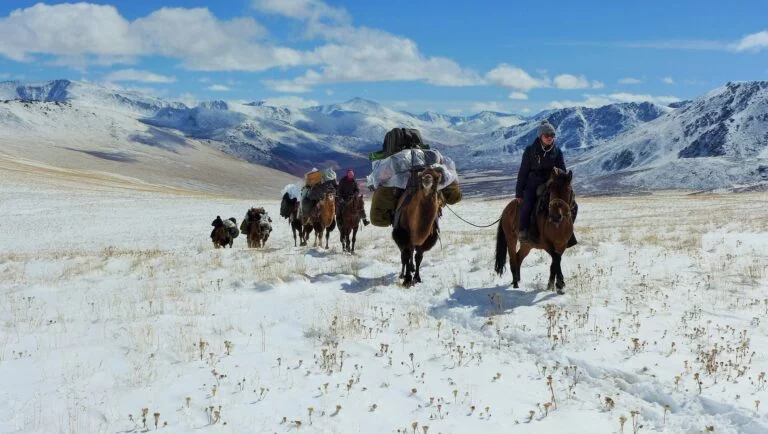


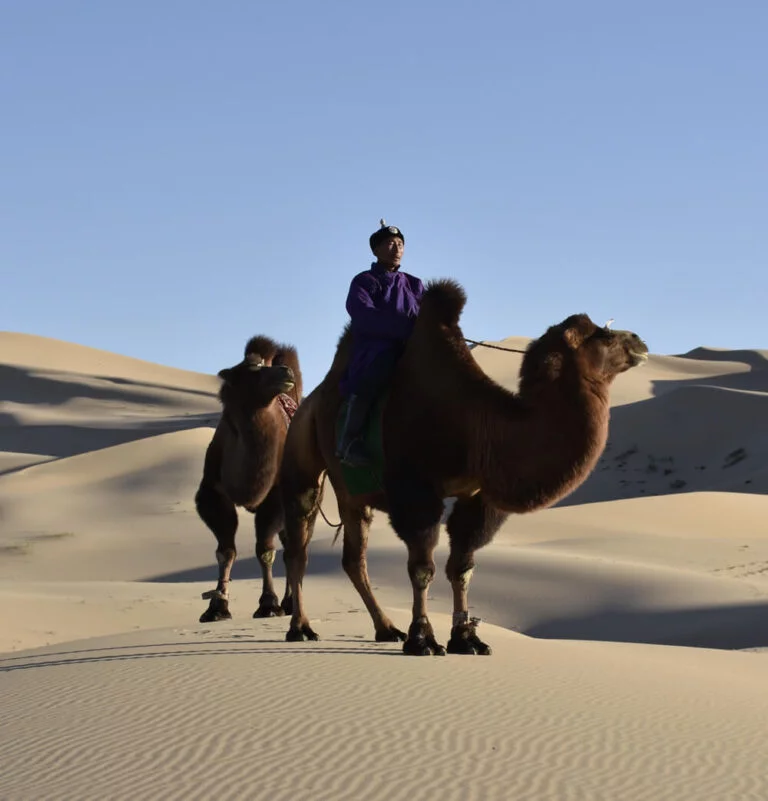


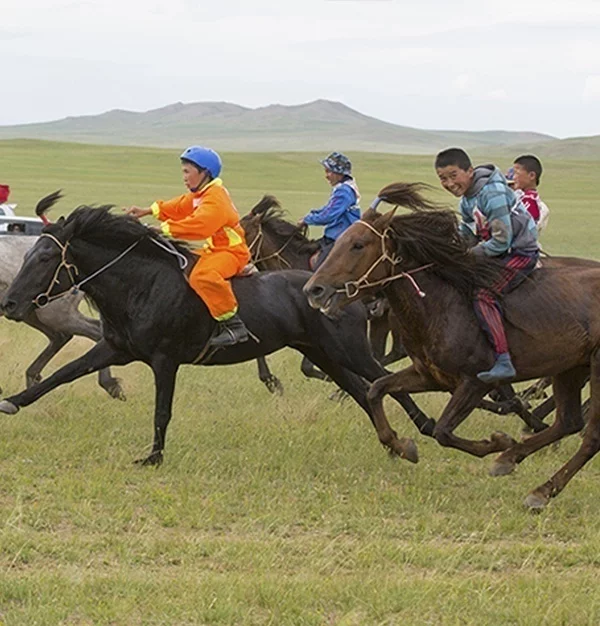




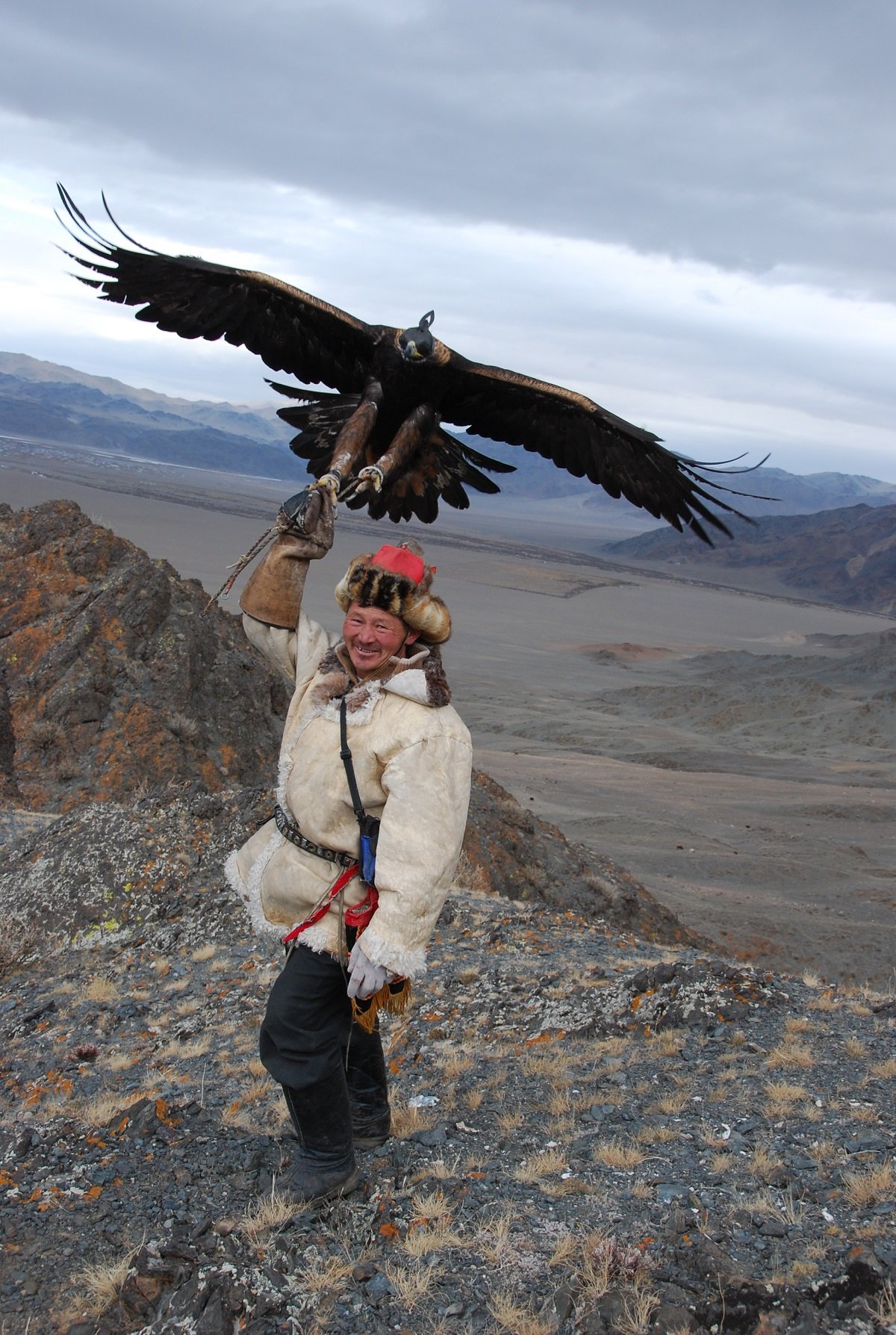




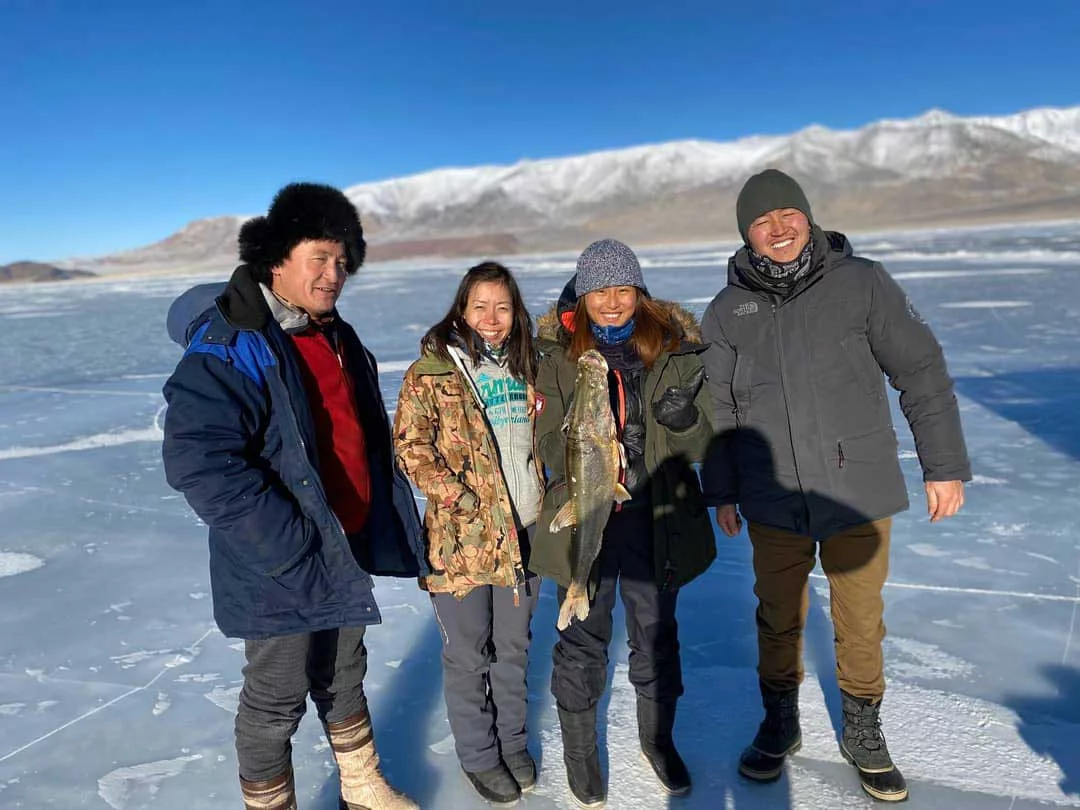

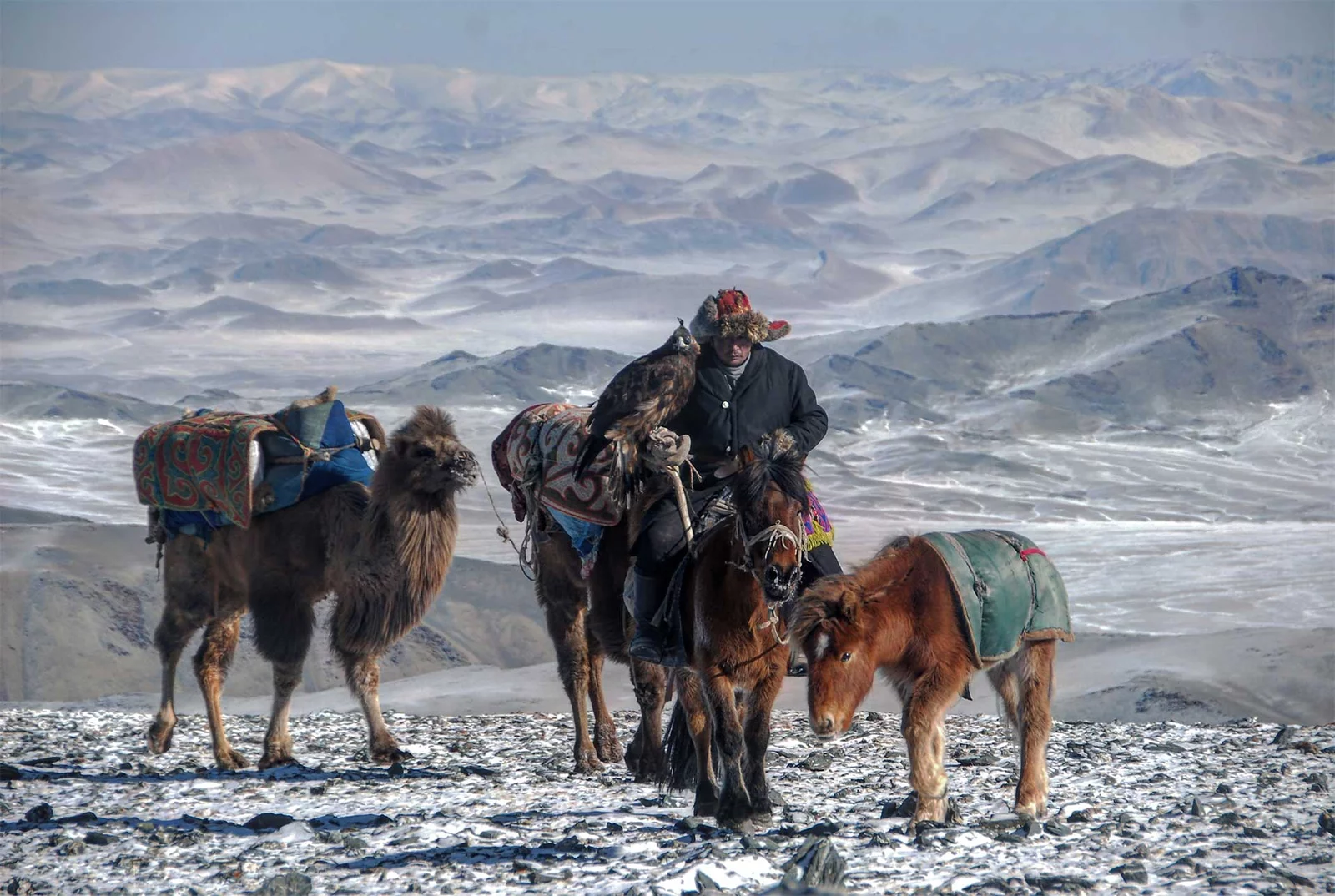

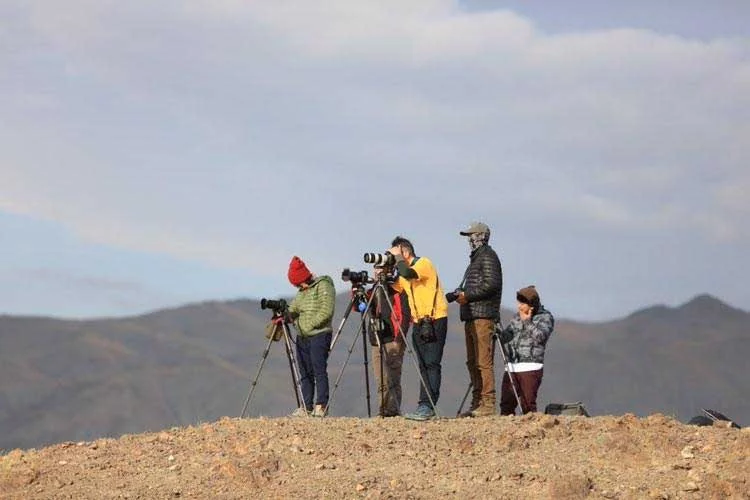


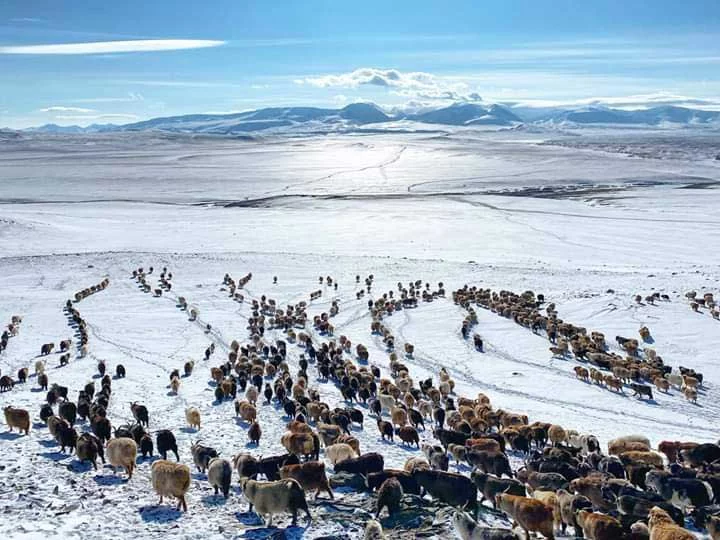

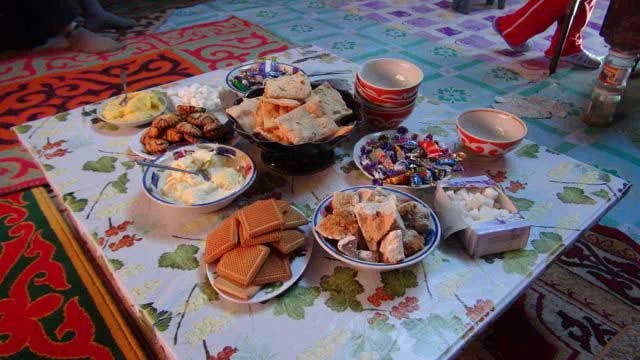


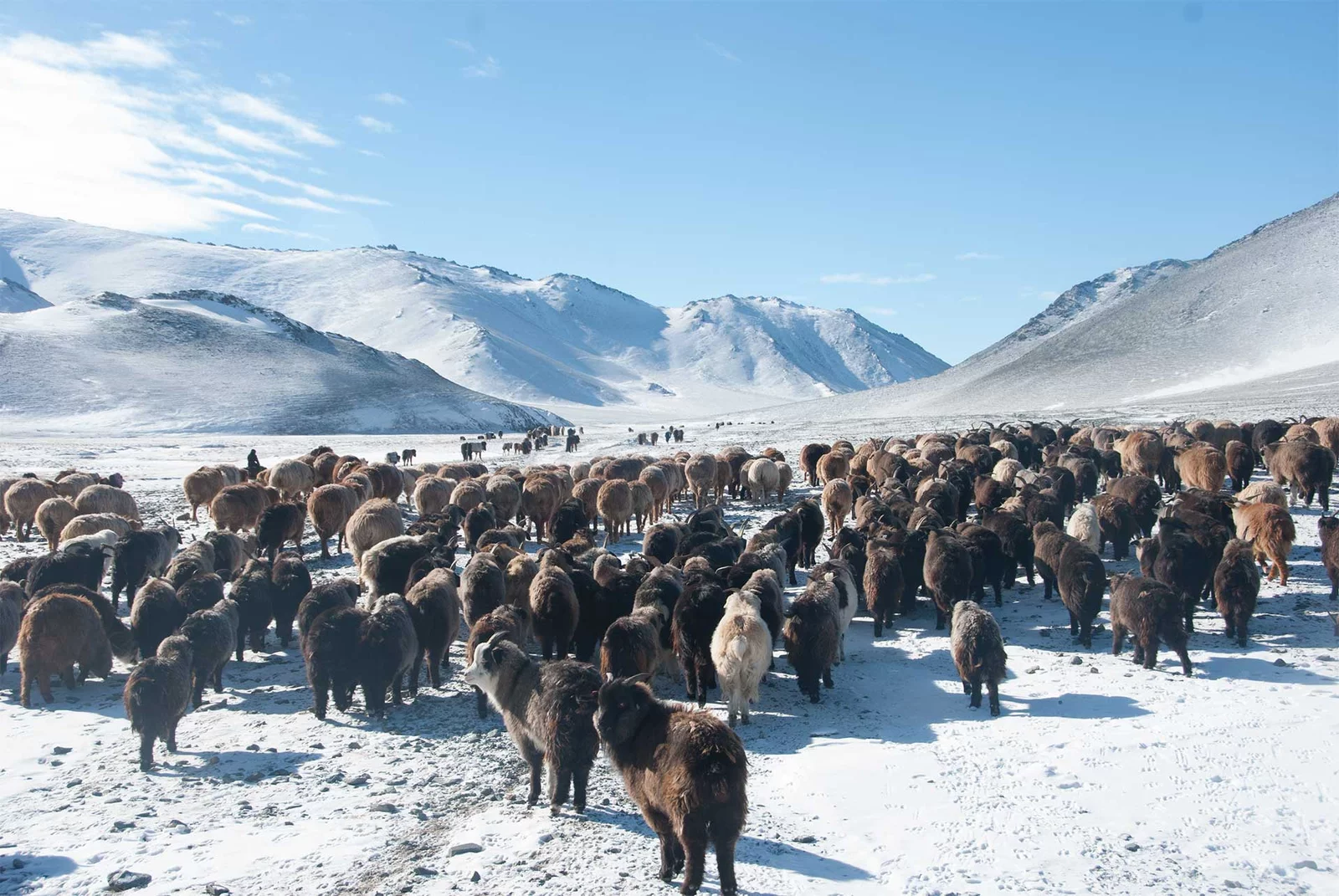


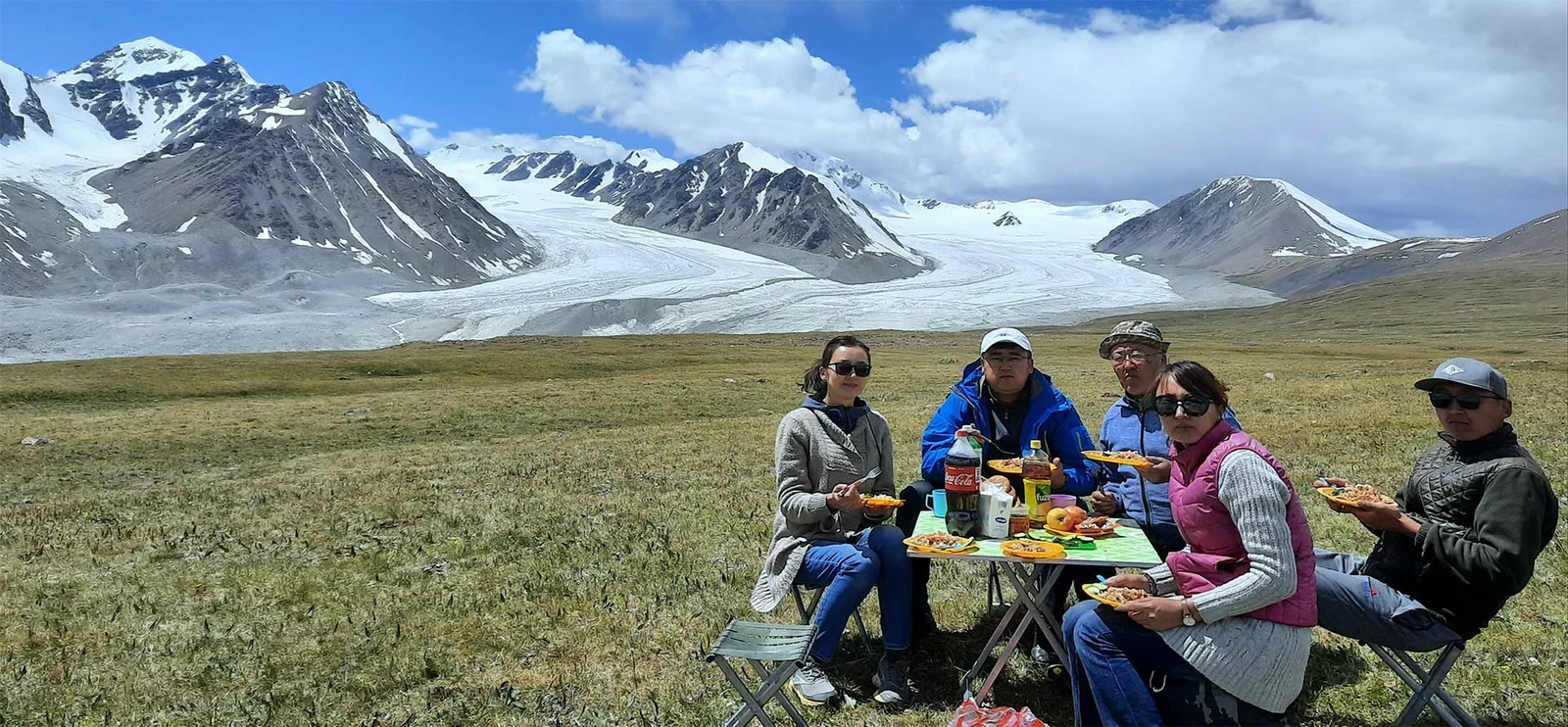
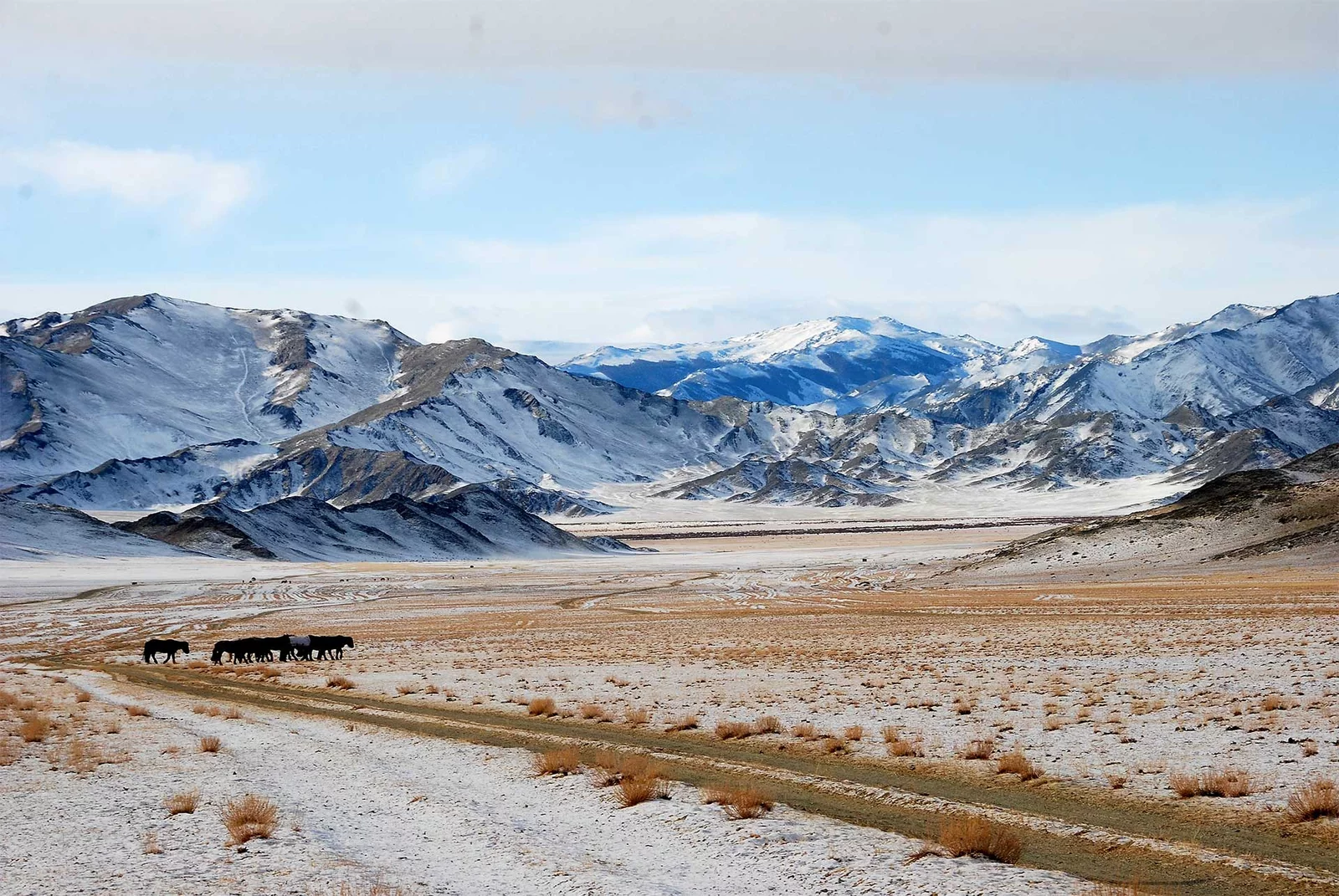




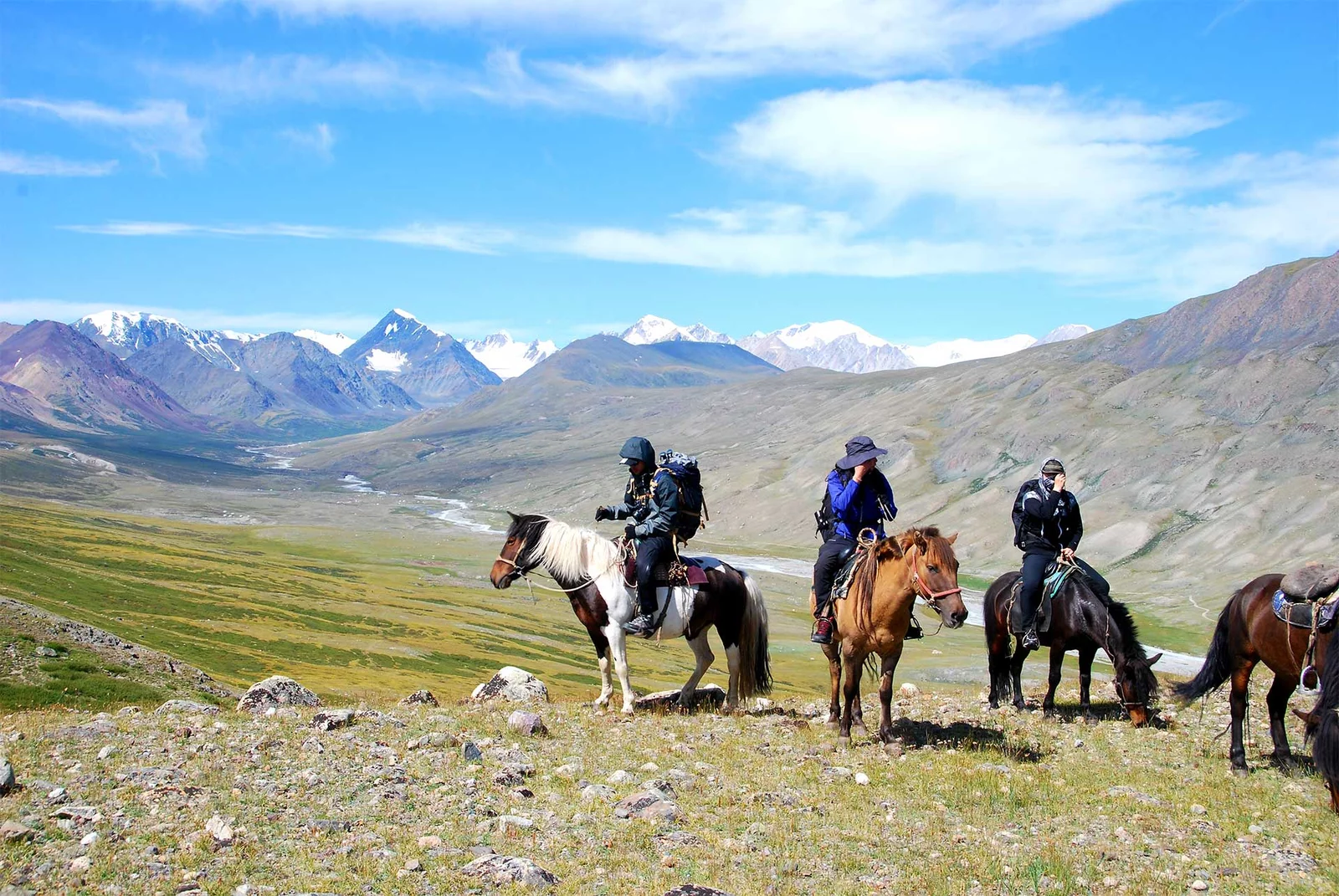



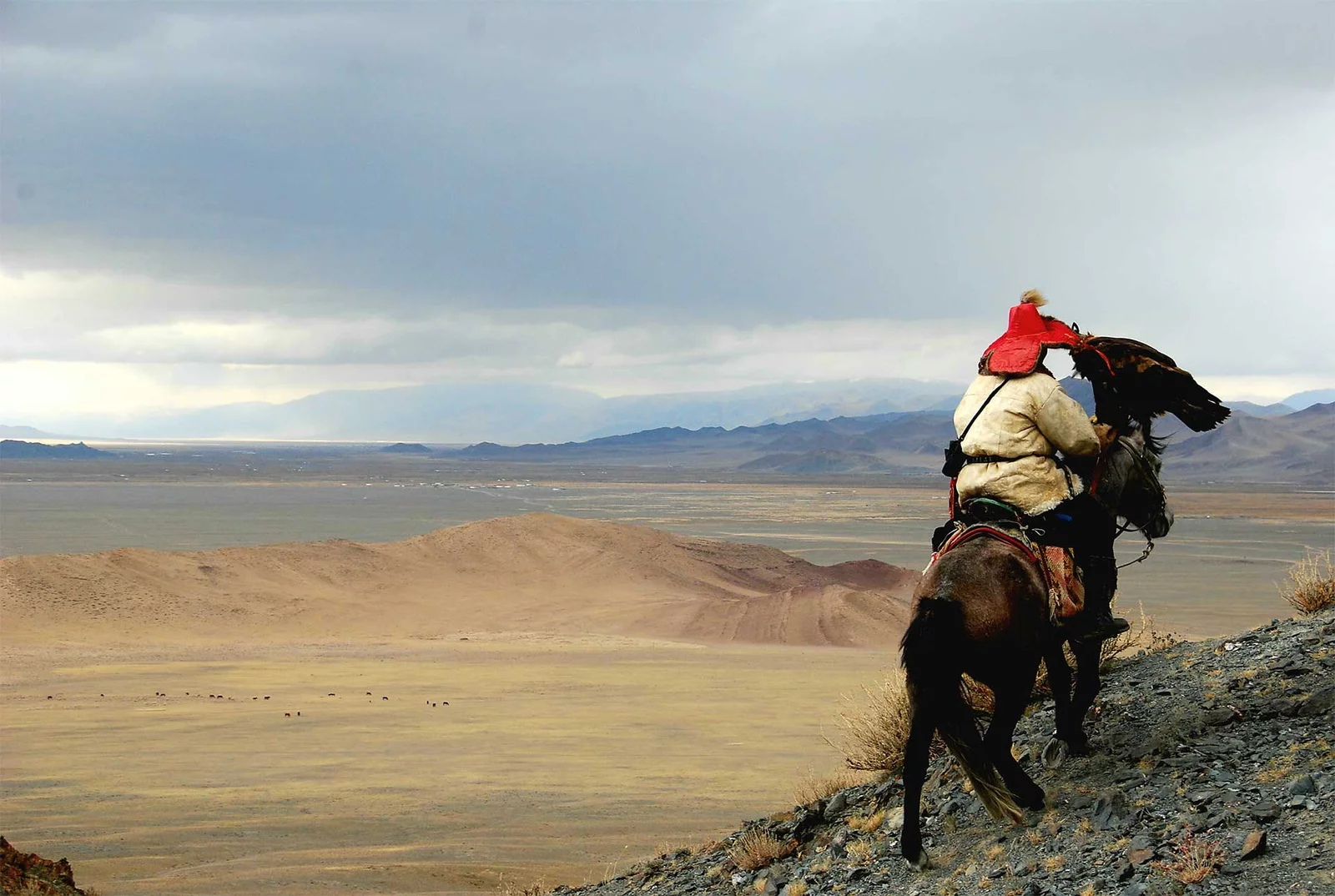

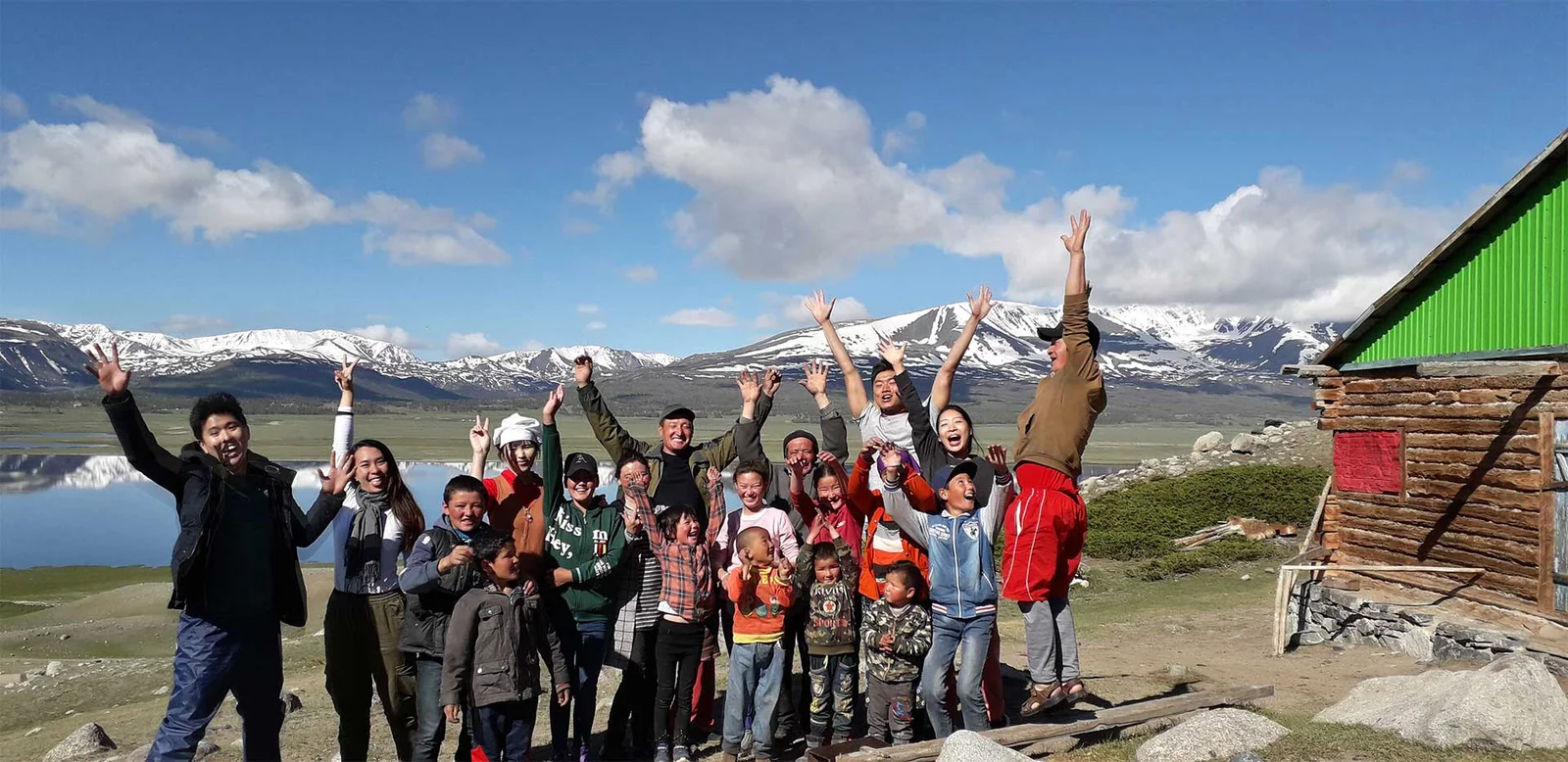
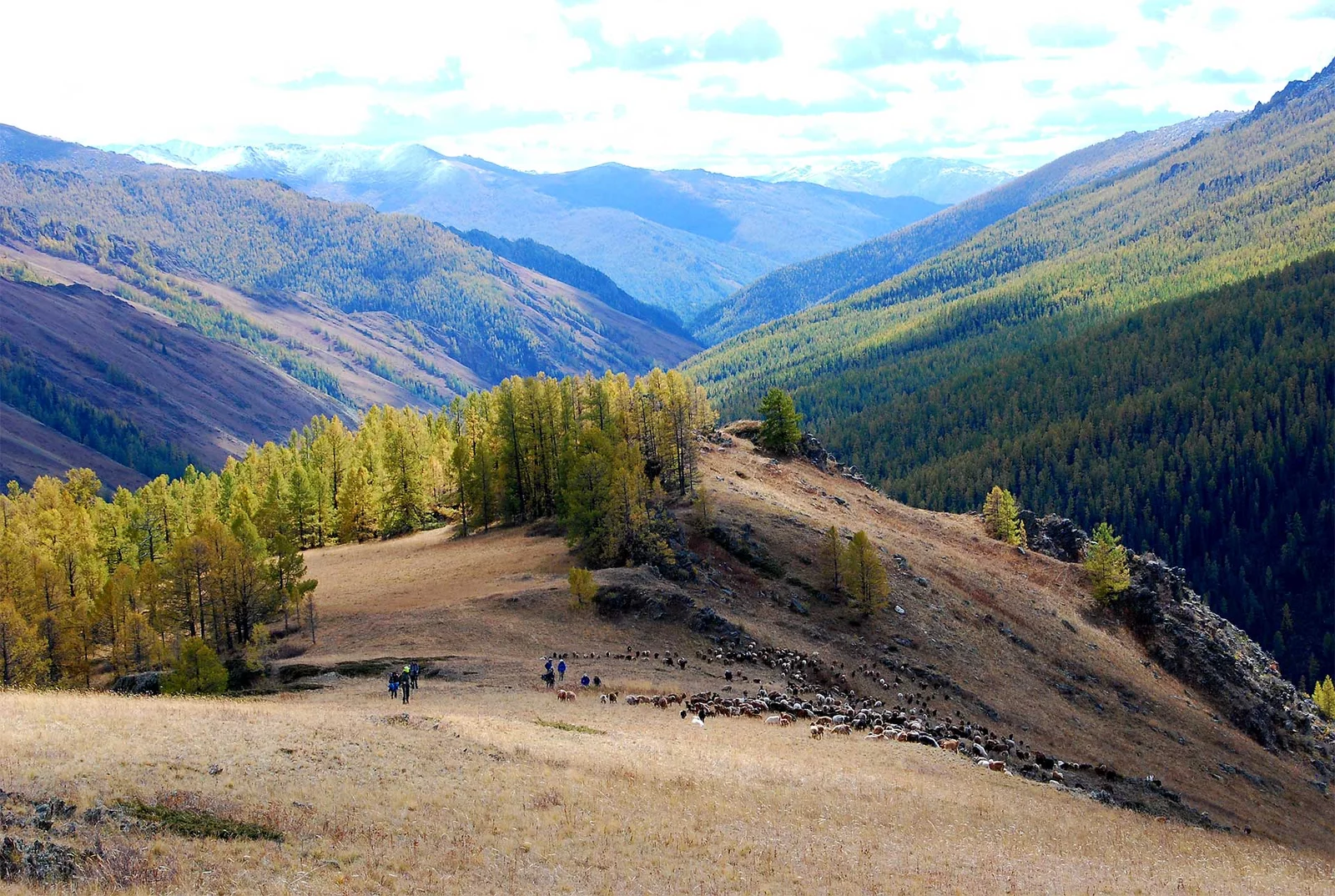



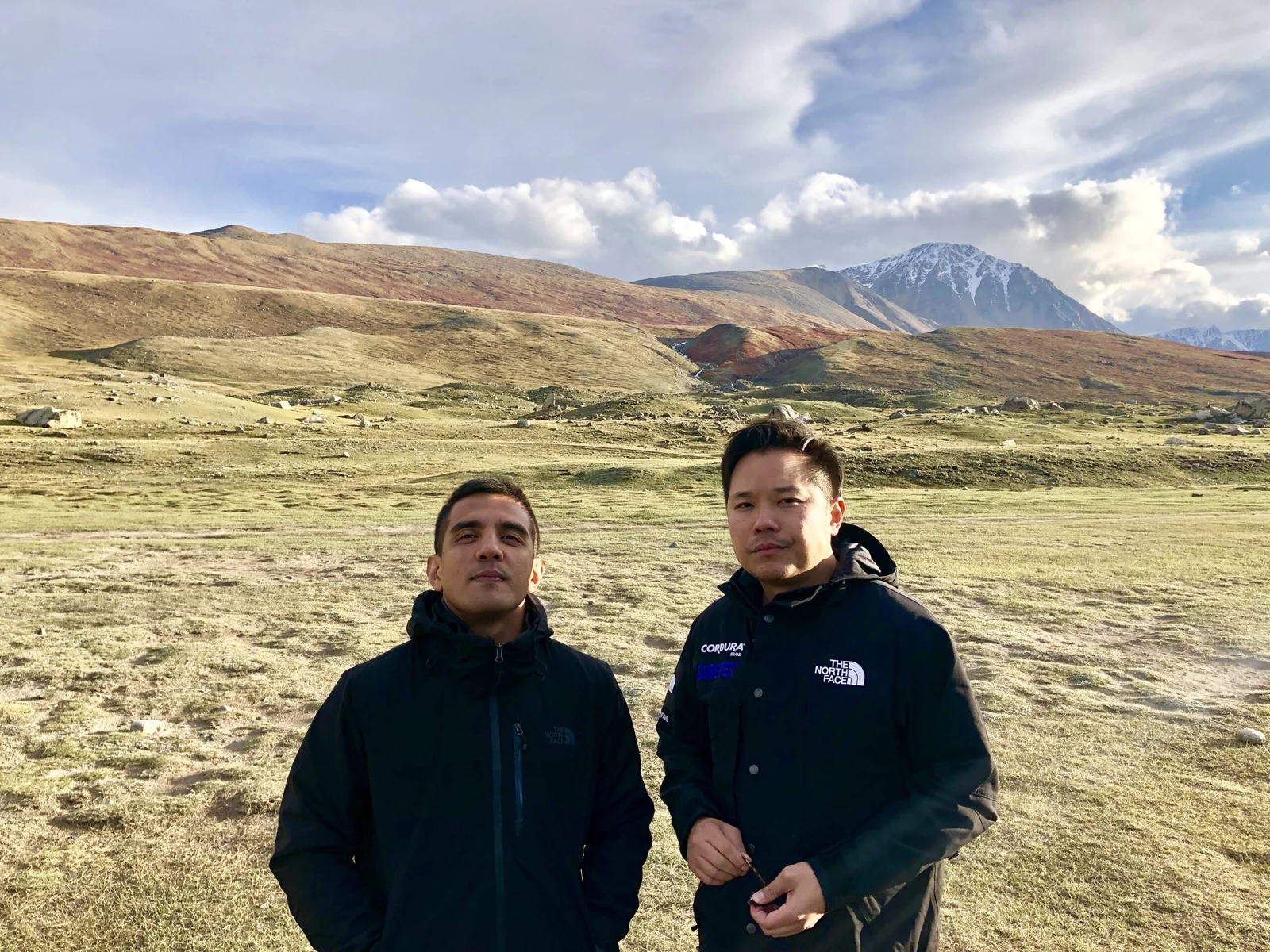
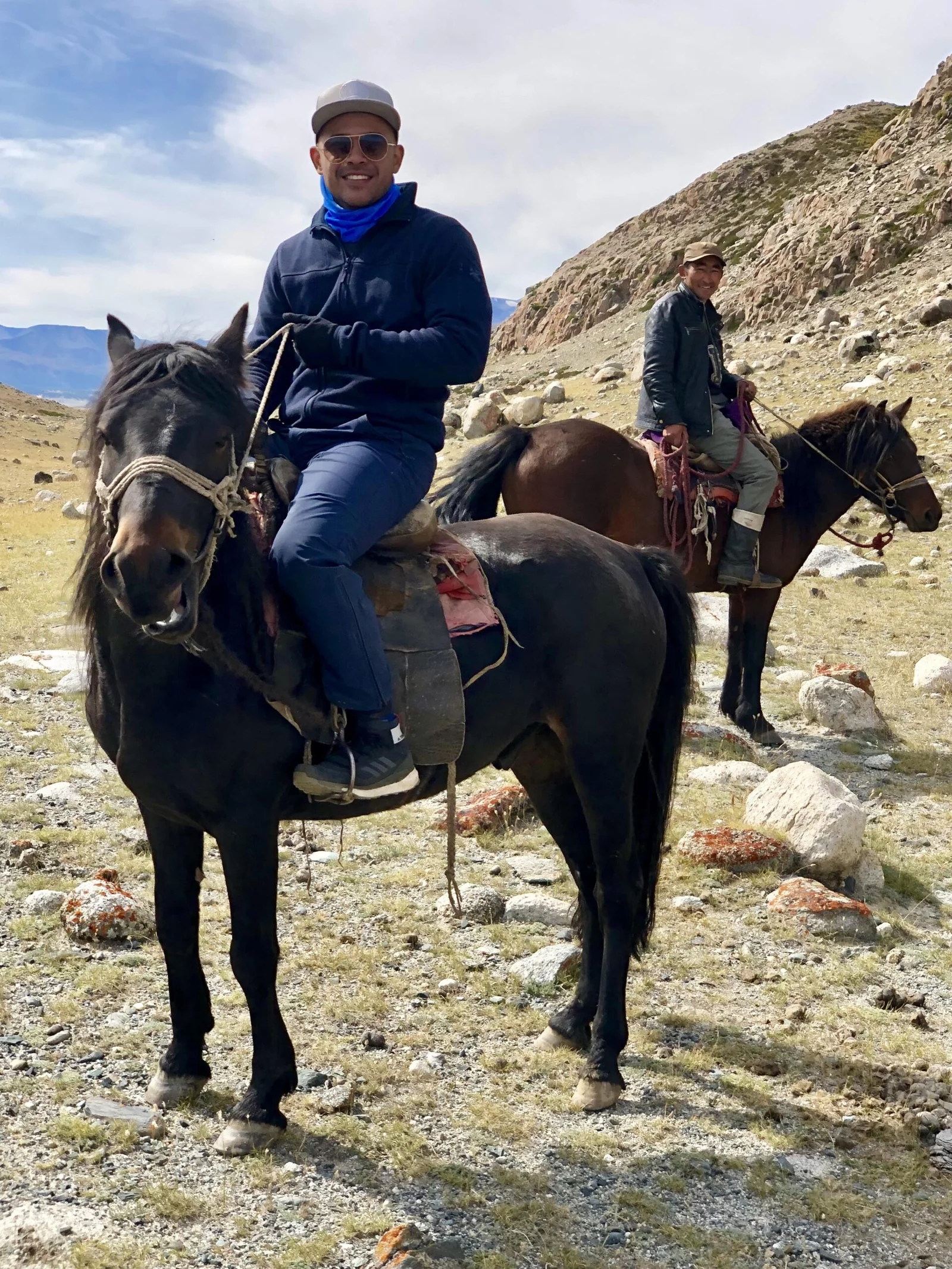






Enjoy The Vast Beauties Of Mongolia
Check out our collection of multi-day eco-friendly tours we run throughout Mongolia, with a wide range of activities and destinations including horse riding, trekking, photography tours, and visiting with nomadic eagle hunters.
Sayat Travel reveals Mongolia’s striking landscapes, unique wildlife, hardy but friendly people, and rich, ancient ethnic cultures.
Book a trip to Reindeer Herder tribe in Taiga Forest.
The Tsaatan reindeer herders have approximately 60 tribes left in Northern Mongolia
-
The Tsaatan, also known as the Dukha, form a small ethnic community in northern Mongolia, specifically in the Khövsgöl aimag (province) near the Russian border. They maintain a unique lifestyle centered around their relationship with reindeer, practicing traditional nomadic reindeer herding.
-
Nomadic Lifestyle:
Tsaatan people lead a nomadic life, constantly moving with their reindeer herds in search of suitable grazing areas throughout the year.
Their traditional dwelling is a portable and collapsible teepee-like structure known as an "ortz," crafted from larchwood and covered with reindeer hides.
Reindeer Herding:
Reindeer play a vital role in the Tsaatan way of life, serving as transportation, carrying goods, and providing meat, milk, and hides.
Tsaatan have a profound spiritual connection with their reindeer, viewing them not just as livestock but as companions and family members.
Clothing and Culture:
Tsaatan individuals wear distinctive clothing made from reindeer hides, including coats, boots, and hats, serving both practical and cultural purposes in harsh Mongolian climates.
The Tsaatan have their own language, related to the Tuvinian languages spoken in the region.
Challenges and Changing Lifestyle:
The traditional Tsaatan lifestyle faces challenges due to factors such as climate change, economic pressures, and external influences.
Some Tsaatan families are transitioning to a more settled lifestyle, with members leaving nomadic reindeer herding for education and employment opportunities in urban areas.
Tourism and Conservation:
The distinctive Tsaatan lifestyle attracts tourists seeking to experience their culture and the breathtaking landscapes of the Khövsgöl region.
However, the surge in tourism raises concerns about its impact on Tsaatan traditions and the environment, prompting efforts to balance tourism with cultural preservation and sustainable practices.
In summary, the Tsaatan people and their nomadic reindeer herding offer a captivating glimpse into a lifestyle deeply intertwined with nature and their reindeer companions. Like many indigenous communities, the Tsaatan face challenges in safeguarding their cultural heritage amidst modernization and external pressures.
Altai Bovd National Park Tour
Drive, trek, and horseback through the gorgeous Altai Tavan Bogd National Park lake region
-
Discover the breathtaking Altai Mountain range, a natural treasure featuring snow-capped peaks, flowing rivers, and glaciers. Extending from the Russian border to Mongolia's Altai-Gobi province, this stunning park unfolds along the Mongolian Altai mountain range, crossing into China and Russia.
Named "Tavan Bogd" meaning "five Saints," the range boasts five main peaks, with Huiten reaching 4374m, marking the highest point at the intersection of Mongolia, China, and Russia. The second highest peak, Nairamdal, symbolizing friendship, is shared by all three nations.
From towering peaks to vibrant green valleys, the park encompasses the picturesque Khoton Nuur, Khurgan Nuur, and Dayan Nuur lakes. These lakes serve as the source of the Khovd Gol river, eventually flowing into Khar Us Nuur in the Khovd aimag province. Immerse yourself in the natural wonders of this captivating region.
-
Horseback Riding Tours:
Explore the stunning landscapes of the Altai region on horseback, riding through vast steppe expanses, mountain trails, and picturesque valleys.
Hiking and Mountain Climbing:
Embark on hiking adventures to discover scenic trails, challenging mountain paths, and panoramic views. Mountain climbing is also possible, with peaks like Huiten offering thrilling experiences.
Photography Tours:
Capture the breathtaking beauty of the Altai Mountains with photography tours, focusing on the diverse landscapes, wildlife, and cultural elements.
Bird Watching:
The Altai region is home to diverse bird species. Birdwatchers can enjoy observing and identifying birds in their natural habitats.
Kayaking, Rafting, and Canoeing:
Experience the thrill of water adventures on the pristine lakes and rivers of the Altai, whether it's kayaking, rafting, or canoeing.
Traditional Experiences:
Immerse yourself in the nomadic culture of the Altai region. Participate in traditional experiences like staying in yurts, tasting local cuisine, and engaging with nomadic communities.
Local Festivals:
Attend local festivals to witness traditional celebrations, cultural performances, and events that showcase the rich heritage of the Altai people.
The Altai Mountains provide a diverse playground for outdoor activities, cultural experiences, and opportunities to connect with nature. Whether you seek adrenaline-pumping adventures or a serene appreciation of the environment, the Altai region has something to offer for every kind of explorer.
Golden Eagle Hunter Festival 2024
Visit some of the last Kazakh golden eagle hunters of Western Mongolia
-
Discover the fascinating tradition of Mongolian nomadic eagle hunters, also known as "berkutchi." Rooted in the nomadic Kazakh culture, these hunters embody a deep connection to the land while training golden eagles for winter hunting.
-
Nomadic Lifestyle:
Explore the nomadic life of eagle hunters, moving across Mongolia's vast landscapes with their livestock.
Eagle Training Techniques:
Learn about the intricate process of capturing and training young golden eagles, forming strong bonds and teaching them specific commands.
Traditional Clothing and Equipment:
Adapted to Mongolia's harsh climate, eagle hunters wear traditional fur-lined clothing and use specialized equipment like a leather glove.
Cultural Significance:
Understand the cultural and spiritual importance of eagle hunting, passed down through generations.
Tourism and Conservation Challenges:
Delve into the impact of tourism on this tradition and the efforts to strike a balance with conservation practices.
Annual Eagle Festivals:
Discover how festivals serve as platforms for eagle hunters to showcase their skills and share their cultural heritage.
Mongolian nomadic eagle hunters offer a captivating blend of tradition, skill, and nature. Explore their way of life while considering the challenges of modernization and the importance of sustainable conservation practices.
Trekking & Camping Tours
Cross-country hikes and fire-lit camping trips customizable for all regions of Mongolia
-
Explore customized trekking and camping tours across the diverse regions of Mongolia. Our accommodations range from waterproof tents to immersive stays in nomadic family Gers or Yurts, complete with cozy stove-heating inside.
Among our top trekking tours is the captivating journey through Altai Bovd National Park, situated on the border of Western Mongolia. Experience the natural wonders of this pristine location with our tailored itineraries and accommodations that offer a unique blend of comfort and adventure.
Mongolian Horseback Riding Tours
We offer all-level horseback riding tours to unveil and explore Mongolia’s beautiful destinations.
-
Embark on an exhilarating horseback riding adventure in Mongolia's Altai region. Discover vast steppe landscapes, rugged mountains, and pristine lakes. Immerse yourself in nomadic culture, encounter diverse wildlife, and explore ancient historical sites. Guided by experts, this equestrian journey promises an authentic and immersive experience, seamlessly blending natural wonders with rich cultural exploration in Mongolia's Altai region.
-
Mongolian horses are resilient and integral to the nomadic way of life. Raised in a traditional and sustainable manner, here's an overview of how Mongolian horses are brought up:
Nomadic Environment:
Mongolian horses are raised in the vast and diverse landscapes of Mongolia, adapting to a nomadic lifestyle alongside herds of livestock.
Natural Grazing:
These horses graze freely on the expansive steppes, consuming natural vegetation that contributes to their robust health.
Sturdy Breeds:
Mongolian horses belong to sturdy and enduring breeds, well-suited for the challenging terrains and weather conditions of the region.
Nomadic Herding Practices:
Nomadic herders play a crucial role in the upbringing of Mongolian horses. The horses often share close bonds with the herding families.
Endurance and Adaptability:
Mongolian horses exhibit remarkable endurance and adaptability, essential qualities for traversing the vast landscapes during nomadic migrations.
Training for Work:
From a young age, these horses are trained for various tasks, including herding livestock, carrying goods, and serving as reliable transportation for nomadic families.
Cultural Significance:
Mongolian horses hold cultural significance and are celebrated in traditional events like Naadam, where horse racing is a key component.
Winter Survival:
During harsh winter conditions, Mongolian horses endure and find sustenance in snow-covered pastures, showcasing their ability to thrive in challenging environments.
Symbiotic Relationship:
The relationship between Mongolian herders and their horses is symbiotic, with the horses providing essential support for nomadic life.
Conservation Efforts:
In recent years, efforts have been made to conserve and preserve the genetic diversity of Mongolian horse breeds, recognizing their ecological and cultural importance.
In essence, Mongolian horses are not just livestock; they are vital companions in the nomadic way of life, embodying endurance, adaptability, and a deep connection to the unique landscapes of Mongolia.
Nauryz Festival Tour
Join the vibrant festivities of Nauryz, the New Year celebration of Kazakhs held in late March throughout Central Asia.
-
TNauryz is a significant Kazakh holiday marking the new year, celebrated for several days from March 21. Meaning 'new day,' this ancient tradition in the Great Steppes involves families sharing Nauriz-koje soup on a spread called dastarkhan. The soup symbolizes prosperity, and during Nauryz, families set aside food for the elderly. The celebration, void of alcohol and gift exchanges, includes evening fires, folk songs, dances, and traditional games. The Alatau tradition involves climbing a mountain at sunset, welcoming the New Year sun at sunrise for a sense of renewal and connection with nature.
Book a trip to Reindeer Herder tribe in Taiga Forest.
The Tsaatan reindeer herders have approximately 60 tribes left in Northern Mongolia
-
The Tsaatan, also known as the Dukha, form a small ethnic community in northern Mongolia, specifically in the Khövsgöl aimag (province) near the Russian border. They maintain a unique lifestyle centered around their relationship with reindeer, practicing traditional nomadic reindeer herding.
-
Nomadic Lifestyle:
Tsaatan people lead a nomadic life, constantly moving with their reindeer herds in search of suitable grazing areas throughout the year.
Their traditional dwelling is a portable and collapsible teepee-like structure known as an "ortz," crafted from larchwood and covered with reindeer hides.
Reindeer Herding:
Reindeer play a vital role in the Tsaatan way of life, serving as transportation, carrying goods, and providing meat, milk, and hides.
Tsaatan have a profound spiritual connection with their reindeer, viewing them not just as livestock but as companions and family members.
Clothing and Culture:
Tsaatan individuals wear distinctive clothing made from reindeer hides, including coats, boots, and hats, serving both practical and cultural purposes in harsh Mongolian climates.
The Tsaatan have their own language, related to the Tuvinian languages spoken in the region.
Challenges and Changing Lifestyle:
The traditional Tsaatan lifestyle faces challenges due to factors such as climate change, economic pressures, and external influences.
Some Tsaatan families are transitioning to a more settled lifestyle, with members leaving nomadic reindeer herding for education and employment opportunities in urban areas.
Tourism and Conservation:
The distinctive Tsaatan lifestyle attracts tourists seeking to experience their culture and the breathtaking landscapes of the Khövsgöl region.
However, the surge in tourism raises concerns about its impact on Tsaatan traditions and the environment, prompting efforts to balance tourism with cultural preservation and sustainable practices.
In summary, the Tsaatan people and their nomadic reindeer herding offer a captivating glimpse into a lifestyle deeply intertwined with nature and their reindeer companions. Like many indigenous communities, the Tsaatan face challenges in safeguarding their cultural heritage amidst modernization and external pressures.
Altai Bovd National Park Tour
Drive, trek, and horseback through the gorgeous Altai Tavan Bogd National Park lake region
-
Discover the breathtaking Altai Mountain range, a natural treasure featuring snow-capped peaks, flowing rivers, and glaciers. Extending from the Russian border to Mongolia's Altai-Gobi province, this stunning park unfolds along the Mongolian Altai mountain range, crossing into China and Russia.
Named "Tavan Bogd" meaning "five Saints," the range boasts five main peaks, with Huiten reaching 4374m, marking the highest point at the intersection of Mongolia, China, and Russia. The second highest peak, Nairamdal, symbolizing friendship, is shared by all three nations.
From towering peaks to vibrant green valleys, the park encompasses the picturesque Khoton Nuur, Khurgan Nuur, and Dayan Nuur lakes. These lakes serve as the source of the Khovd Gol river, eventually flowing into Khar Us Nuur in the Khovd aimag province. Immerse yourself in the natural wonders of this captivating region.
-
Horseback Riding Tours:
Explore the stunning landscapes of the Altai region on horseback, riding through vast steppe expanses, mountain trails, and picturesque valleys.
Hiking and Mountain Climbing:
Embark on hiking adventures to discover scenic trails, challenging mountain paths, and panoramic views. Mountain climbing is also possible, with peaks like Huiten offering thrilling experiences.
Photography Tours:
Capture the breathtaking beauty of the Altai Mountains with photography tours, focusing on the diverse landscapes, wildlife, and cultural elements.
Bird Watching:
The Altai region is home to diverse bird species. Birdwatchers can enjoy observing and identifying birds in their natural habitats.
Kayaking, Rafting, and Canoeing:
Experience the thrill of water adventures on the pristine lakes and rivers of the Altai, whether it's kayaking, rafting, or canoeing.
Traditional Experiences:
Immerse yourself in the nomadic culture of the Altai region. Participate in traditional experiences like staying in yurts, tasting local cuisine, and engaging with nomadic communities.
Local Festivals:
Attend local festivals to witness traditional celebrations, cultural performances, and events that showcase the rich heritage of the Altai people.
The Altai Mountains provide a diverse playground for outdoor activities, cultural experiences, and opportunities to connect with nature. Whether you seek adrenaline-pumping adventures or a serene appreciation of the environment, the Altai region has something to offer for every kind of explorer.
Golden Eagle Hunter Festival 2024
Visit some of the last Kazakh golden eagle hunters of Western Mongolia
-
Discover the fascinating tradition of Mongolian nomadic eagle hunters, also known as "berkutchi." Rooted in the nomadic Kazakh culture, these hunters embody a deep connection to the land while training golden eagles for winter hunting.
-
Nomadic Lifestyle:
Explore the nomadic life of eagle hunters, moving across Mongolia's vast landscapes with their livestock.
Eagle Training Techniques:
Learn about the intricate process of capturing and training young golden eagles, forming strong bonds and teaching them specific commands.
Traditional Clothing and Equipment:
Adapted to Mongolia's harsh climate, eagle hunters wear traditional fur-lined clothing and use specialized equipment like a leather glove.
Cultural Significance:
Understand the cultural and spiritual importance of eagle hunting, passed down through generations.
Tourism and Conservation Challenges:
Delve into the impact of tourism on this tradition and the efforts to strike a balance with conservation practices.
Annual Eagle Festivals:
Discover how festivals serve as platforms for eagle hunters to showcase their skills and share their cultural heritage.
Mongolian nomadic eagle hunters offer a captivating blend of tradition, skill, and nature. Explore their way of life while considering the challenges of modernization and the importance of sustainable conservation practices.
Trekking & Camping Tours
Cross-country hikes and fire-lit camping trips customizable for all regions of Mongolia
-
Explore customized trekking and camping tours across the diverse regions of Mongolia. Our accommodations range from waterproof tents to immersive stays in nomadic family Gers or Yurts, complete with cozy stove-heating inside.
Among our top trekking tours is the captivating journey through Altai Bovd National Park, situated on the border of Western Mongolia. Experience the natural wonders of this pristine location with our tailored itineraries and accommodations that offer a unique blend of comfort and adventure.
Mongolian Horseback Riding Tours
We offer all-level horseback riding tours to unveil and explore Mongolia’s beautiful destinations.
-
Embark on an exhilarating horseback riding adventure in Mongolia's Altai region. Discover vast steppe landscapes, rugged mountains, and pristine lakes. Immerse yourself in nomadic culture, encounter diverse wildlife, and explore ancient historical sites. Guided by experts, this equestrian journey promises an authentic and immersive experience, seamlessly blending natural wonders with rich cultural exploration in Mongolia's Altai region.
-
Mongolian horses are resilient and integral to the nomadic way of life. Raised in a traditional and sustainable manner, here's an overview of how Mongolian horses are brought up:
Nomadic Environment:
Mongolian horses are raised in the vast and diverse landscapes of Mongolia, adapting to a nomadic lifestyle alongside herds of livestock.
Natural Grazing:
These horses graze freely on the expansive steppes, consuming natural vegetation that contributes to their robust health.
Sturdy Breeds:
Mongolian horses belong to sturdy and enduring breeds, well-suited for the challenging terrains and weather conditions of the region.
Nomadic Herding Practices:
Nomadic herders play a crucial role in the upbringing of Mongolian horses. The horses often share close bonds with the herding families.
Endurance and Adaptability:
Mongolian horses exhibit remarkable endurance and adaptability, essential qualities for traversing the vast landscapes during nomadic migrations.
Training for Work:
From a young age, these horses are trained for various tasks, including herding livestock, carrying goods, and serving as reliable transportation for nomadic families.
Cultural Significance:
Mongolian horses hold cultural significance and are celebrated in traditional events like Naadam, where horse racing is a key component.
Winter Survival:
During harsh winter conditions, Mongolian horses endure and find sustenance in snow-covered pastures, showcasing their ability to thrive in challenging environments.
Symbiotic Relationship:
The relationship between Mongolian herders and their horses is symbiotic, with the horses providing essential support for nomadic life.
Conservation Efforts:
In recent years, efforts have been made to conserve and preserve the genetic diversity of Mongolian horse breeds, recognizing their ecological and cultural importance.
In essence, Mongolian horses are not just livestock; they are vital companions in the nomadic way of life, embodying endurance, adaptability, and a deep connection to the unique landscapes of Mongolia.
Nauryz Festival Tour
Join the vibrant festivities of Nauryz, the New Year celebration of Kazakhs held in late March throughout Central Asia.
-
TNauryz is a significant Kazakh holiday marking the new year, celebrated for several days from March 21. Meaning 'new day,' this ancient tradition in the Great Steppes involves families sharing Nauriz-koje soup on a spread called dastarkhan. The soup symbolizes prosperity, and during Nauryz, families set aside food for the elderly. The celebration, void of alcohol and gift exchanges, includes evening fires, folk songs, dances, and traditional games. The Alatau tradition involves climbing a mountain at sunset, welcoming the New Year sun at sunrise for a sense of renewal and connection with nature.







